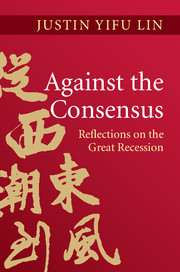Book contents
- Frontmatter
- Contents
- List of figures
- List of tables
- List of boxes
- Preface
- Overview
- Part I What Caused the 2008–9 Global Crisis?
- Part II A Win-Win Path to Recovery
- 6 Infrastructure investments – beyond Keynesianism
- 7 A massive global infrastructure initiative
- Part III How Poor Countries Can Catch Up: Flying Geese and Leading Dragons
- Part IV Toward a Brave New World Monetary System
- References
- Index
7 - A massive global infrastructure initiative
from Part II - A Win-Win Path to Recovery
Published online by Cambridge University Press: 05 June 2013
- Frontmatter
- Contents
- List of figures
- List of tables
- List of boxes
- Preface
- Overview
- Part I What Caused the 2008–9 Global Crisis?
- Part II A Win-Win Path to Recovery
- 6 Infrastructure investments – beyond Keynesianism
- 7 A massive global infrastructure initiative
- Part III How Poor Countries Can Catch Up: Flying Geese and Leading Dragons
- Part IV Toward a Brave New World Monetary System
- References
- Index
Summary
The gap between infrastructure demand and supply is so large in developing countries mainly because of the difficulty raising the long-term financing required. Putting a price tag on this gap requires some heroic assumptions about missing data. A 2011 study estimated annual infrastructure needs in developing countries for 2013 at $1,250 billion to $1,500 billion (in 2008 dollars) under various scenarios. The study estimated the financing available for infrastructure projects in developing countries at about $850 billion. If the same amount continues to be available in the medium term, the estimated infrastructure financing gap would be $400 billion to $650 billion a year.
A global infrastructure initiative to finance bottleneck-releasing infrastructure projects would create much-needed jobs in developed and developing countries. It would generate a demand boost and create space for implementing necessary structural reforms in Eurozone and other high-income countries. And a concerted push for a global infrastructure initiative could contribute to a sustained global recovery from the current crises. It is a global win-win for developed and developing countries alike, today and into the future.
- Type
- Chapter
- Information
- Against the ConsensusReflections on the Great Recession, pp. 78 - 98Publisher: Cambridge University PressPrint publication year: 2013



